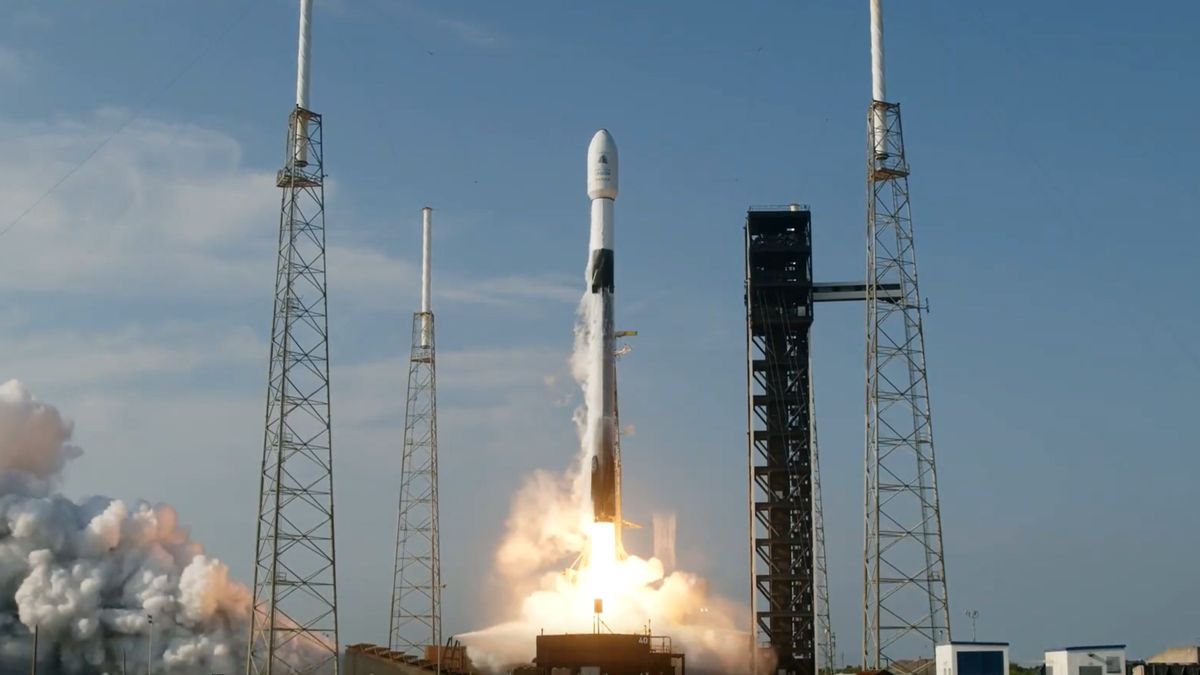SpaceX launched two Earth-imaging satellites today (Aug. 15), continuing to build out the WorldView Legion constellation for Maxar.
A Falcon 9 rocket carrying the WorldView Legion 3 and 4 satellites lifted off today from Cape Canaveral Space Force Station in Florida at 9:00 a.m. EDT (1300 GMT).
As usual, the first stage of Falcon 9 landed successfully some eight minutes after litoff, landing nearby the launch site. SpaceX confirmed deployment of one of the satellites roughly 50 minutes after launch on its livestream on X (formerly Twitter), and its fourth satellite was deployed nearly two hours after launch.
The WorldView Legion constellation will eventually consist of six satellites. The first two are already up, having gotten to orbit aboard a Falcon 9 this past May.
Related: SpaceX Falcon 9 rocket launches 2 Maxar satellites on record-tying 20th flight (video)
“When all six WorldView Legion satellites are launched, it will triple Maxar Intelligence’s capacity to collect 30-centimeter-class [12 inches] and multispectral imagery,” Maxar representatives wrote in a description of the network. (Maxar Intelligence is a division of Maxar Technologies.)
“The full Maxar constellation of 10 electro-optical satellites will image the most rapidly changing areas on Earth as frequently as every 20 to 30 minutes, from sunup to sundown,” they added.
Today’s launch continues a busy stretch for SpaceX: Elon Musk’s company has launched three missions in the past five days, two of which were dedicated to building out its ever-growing Starlink megaconstellation.
SpaceX has launched nearly 80 missions already in 2024, more than 70% of them Starlink flights.
This story was updated at 9 a.m. EDT with news of the successful launch, again at 9:49 a.m. EDT after the first of the satellites was deployed, and again at 11:40 a.m. after the second satellite deployed.

Dr. Thomas Hughes is a UK-based scientist and science communicator who makes complex topics accessible to readers. His articles explore breakthroughs in various scientific disciplines, from space exploration to cutting-edge research.








